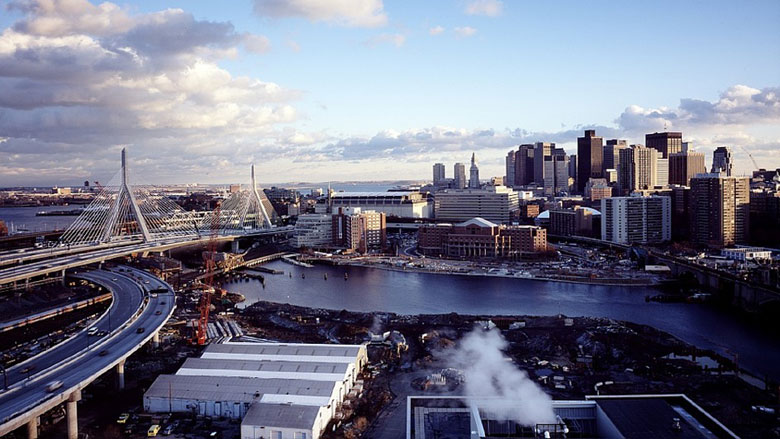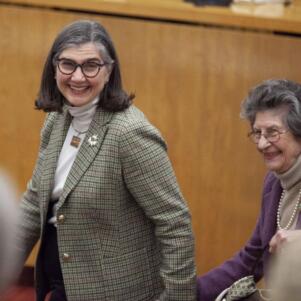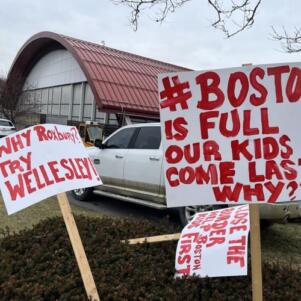A city with a future is a city for families
By Frank Conte | March 21, 2016, 6:19 EDT
 (Courtesy of pixabay)
(Courtesy of pixabay) A few years ago at a gathering of the region’s economists, former city councilor, legal eagle and overall political savant, Lawrence DiCara observed a shift in the city’s demographic.
After years of worrying about a mass exodus of newly-minted college graduates to other parts, DiCara noted that young folks – namely the cohort between the ages of 20 and 34 – were betting big on Boston.
As a real estate lawyer and a native who astonishingly knows the details of all Boston’s 255 precincts, DiCara told the audience that the young folks moving into the downtown neighborhoods wanted an all-night city. “They like to spend money; they like to eat out at all hours and they expect certain things.”
This cohort of New Bostonians is different and much more open to transforming the city. As the city embarks upon ImagineBoston, the first attempt at a citywide plan since 1965, DiCara’s observations are now ubiquitous and a driving force to keep the city competitive and vibrant.
DiCara notes that the city is on track to reach a population watermark it hasn’t seen since the 1930s. In 1930, Boston’s population was 781,188. The Metropolitan Area Planning Commission expects a return to roughly a population 709,000 in 2030.
What’s significant is that household size today is made up of 2.36 individuals compared to 3.39 in 1950 (the earliest data available). That means that as the city prospers families are becoming smaller if they are expanding at all beyond couples. (As an aside, the Walsh administration faces a problem that the school system has too many empty classrooms.)
Will the city find a way to ensure that families, which for decades have defined its tight-knit neighborhoods, give way to an emphasis on young people, many who may delay raising a family or remain childless? Will families, already courted by the vast metropolitan pull of the suburbs, be pushed to the margins?
By sticking around, the young are quickly re-shaping the Athens of America on their own terms. Educated, technically savvy and urbane, and often childless, the young professionals of early 21st century are driving up rents in once-overlooked neighborhoods such as East Boston, Charlestown and Dorchester. Filling a good part of the 45,000 jobs created since 2010, the brave new cohort has reversed the city’s long-termed population decline. The city’s unemployment rate in February is the envy of most American cities: 4.1 percent.
There is little indication that the overall trends will change. In his new book, “The Boston Economy,” a useful how-to-find-a job guidebook for upstart college graduates, George Donnelly captures a city sure of itself. “The Greater Boston economy enjoys an embarrassment of riches. Perhaps no regional economy in the country has more depth and balance than Boston.”
In keeping with its reputation as a “smart city,” the young have secured the city’s reputation for guarding human capital. In a recent survey, Boston ranked number one with 54 percent of its population between the ages of 25 and 44 holding a bachelor’s degree. However, that same survey noted that Boston ranks near the bottom with households with children between the ages of 5-14.
Unlike older residents, the young Bostonians favorably view the upside of creative destruction. Today, Boston’s young tend not to own a car and push for expanded night MBTA service. The ZipCar hourly rentals or Hubway bicycles at T stops are a perfect fit for the carefree city lifestyle they practice. A few may question the stodginess of the city’s neo-puritanical outlook: why so few liquor licenses and why does last call strike at 1 or 2 a.m.?
The young and restless are less willing to tolerate the city’s broken taxi industry and the regulatory roadblocks set before Uber, Lyft, Airbnb and other disruptions of the sharing economy. They also like to see more food trucks. And, they can’t understand why city government isn’t as efficient or as transparent as a Google app. (To its credit the city has gotten much better). They also think that city and state government might be too stingy when supporting the arts.
The emergence of the city’s youthful workforce comes at the right moment. Despite the American household preference for car-centered suburban living, cities are making a comeback thanks in part to Edward Glaeser’s forceful economic argument in “The Triumph of the City.” Aside from clusters of opportunity for work and play, cities, according to the Harvard economist, are now well-positioned to boost productivity, increase energy efficiency and better access to medical care.
Today’s generation is certainly in tune with the theme of reducing its carbon footprint. Whether they grasp Glaesar’s main point that excessive zoning restrictions and dubious historic preservation rules hinder the housing much needed for economic growth is another matter.
Wave of population changes in the past such as migration from Europe and Central America have contributed to Boston’s maturity as a world class city. The immigrant story continues to weave itself as newcomers arrive from Asia, the Middle East and Eastern Europe. They too are young but if the past is any guide, the new immigrants are big on raising families.
Boston’s recent success as a powerhouse economy may lead municipal and state government leaders to believe they are the wise “men of system” so enamored of the virtues of current policy. But they risk the soft conceit of planning for a city that focuses on the lifestyle preferences of highly skilled workers who design driverless cars, drone delivery and the Internet of Things. A city out of the reach of families is hardly one that’s renewable. After all, urban renewal rests on the aspirations of all people rather than the number of cranes that dot the city’s skyline.
Two wise economic geographers Joel Kotlin and Mark Schill outline the two paths for American cities and there’s a lesson here for Boston.
There are “two divergent kinds of ascendant cities,” they note. “One is driven by the tech industry, the in-migration of educated people and sharply rising incomes; the other type is what we describe as ‘opportunity cities,’ which tend to have a diverse range of industries, lower costs and larger numbers of families. We may be one country, but the future is being shaped by two very different urban archetypes.”
Perhaps the distinction between the two is too neat and worker mobility is more limited than ever. But the global economy forces changes upon us and high-tech, small-family Boston faces competition from other parts of the country for talent and for families.
Frank Conte is director of communications at the Beacon Hill Institute at Suffolk University where he also serves as project manager for the annual State Competitiveness Report and Index.
NBPUrban











